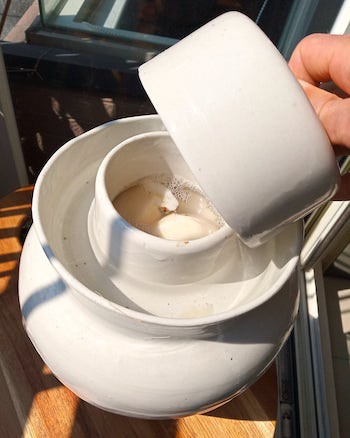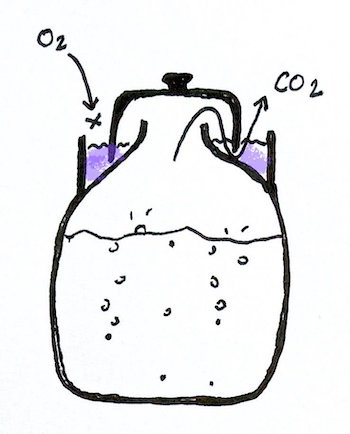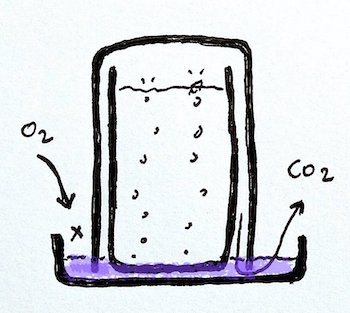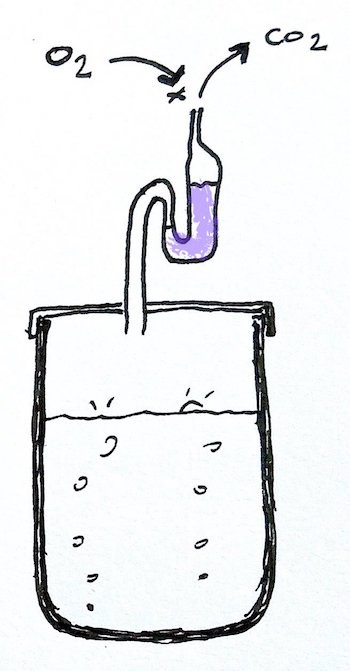How to choose the right fermentation container
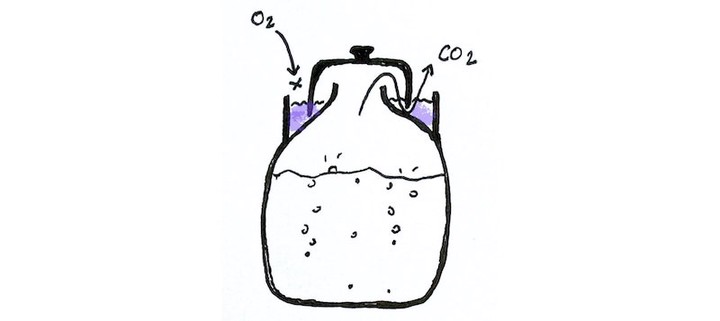
Which container should you use to make your fermentations? I present a variety of containers and how to choose the one you need for your specific fermentation project.
Fermenting food is letting specific micro-organisms transform your food into a tastier, healthier, and better-preserved food. To achieve a good fermentation, you need to select these specific micro-organisms.
But how to select them?
To select them, you just need to put the food that you want to ferment in the conditions that are ideal for the development of these micro-organisms. These conditions are mainly salt concentration, oxygen availability, and temperature. But they can also include other parameters such as moisture, light, acidity, etc.
If you want to favor the growth of lactic acid bacterias, for instance, then you will like to put your food in a place where there is enough salt, and no oxygen. If you want, instead, to favor the growth of fungi, then you will prefer conditions with low salt concentration, and access to oxygen. But if you want to favor a kind of fungi, say mushrooms, over another kind like yeasts, then you will want to make sure that the temperature is not too high.
That is why choosing the right container is one of the most critical aspects of the success of your fermentation projects. Because it is mainly the design of the container which will determine the fermentation conditions and hence the type of micro-organisms making the transformation.
Let’s begin with the example of lacto-fermentation.
Lacto-fermentations
In general, the best conditions to start lacto-fermentations are a brine of 2.25% of salt and no access to oxygen. To limit access to oxygen, you need to find a container that you can close tightly.
One challenging aspect, though, is that micro-organisms will produce carbon dioxide at the beginning of the lacto-fermentation. This means that your container needs to be able to prevent oxygen from entering while allowing carbon dioxide to be expelled or accumulated without breaking your container.
So, how to do this?
Traditional glass or clay jar
Chinese style fermenting jars are one elegant and clever way of letting the carbon dioxide evacuate while preventing oxygen from entering the pot.
They are made of glass or clay, have a variety of shapes, and are usually referred to as fermentation crocks.
A simple alternative
If you don’t have access to such jars, you may be able to do some first exploratory experiments using just two containers and a plate to mimic the system above!
The only downside of this system is that the volume of air trapped at the beginning of the fermentation can be enough to allow yeast growth and develop a yeasty taste.
Modern air-lock containers
You can also prefer to have a modern version using a store-bought air-lock system. The logic of the system is still the same, but the shape is different.
The lid of the container is tightly closed, but it does have a hole leading to a tube where a little amount of water let the gas go out while preventing the air to go in.
Plastic bags
A simple option can be to use plastic bags, such as freezer bags. In this case, you don’t need to add water. You can simply put the food and the salt in the bag.
Simple jars
If you are very adventurous, you can even try to simplify the process by using only standard jars with a screwable lid. But you will have to open the lid from time to time at the beginning of the fermentation to let the excess gas go out.
This strategy is very simple to execute, but the chance of success is lower, because even if you unscrew carefully, it is very difficult to avoid some air to enter, and it is hence very common to see yeasts developing on the top, instead of only lactic-acid bacterias.
But there are a few cases where this kind of container performs actually very well. For instance, if you want to ferment durian to make tempoyak, then it is very difficult to fail, even if some oxygen enters the container during the fermentation process!
Would you like other examples of containers?
Here I presented a few examples of containers for lactic-fermentation. But there are other options more adapted to other kinds of fermentation, such as when making tempeh, or when growing mushrooms.
If you would like me to show more examples, please let me know in the comments!
Did you enjoy this post?
Great! Then, you may also like to read how to make okara tempeh, and how to make chickpea tempeh.
